
Redeveloping the Bao'an G107 into an “organic highway”
By Justine Testado|
Thursday, Aug 4, 2016
Related
Reflecting the rapidly evolving urban landscape throughout China, the city of Bao'an in Shenzhen is setting its sights on revamping the 30 kilometer, 12-lane G107 highway and its surrounding urban environment that's approximately the size of Manhattan, New York. To push that initiative forward, the city invited five leading design teams including firms like OMA to submit proposals. A consortium led by Avoid Obvious Architects and Tetra Architects & Planners placed as a finalist* in the competition with their “organic highway” approach.
By rethinking the notion of a highway and envisioned with a series of utopian-like renderings, the team proposed “a smaller, more fluid, multi-layered thoroughfare that will be a spectacular starting point of growth for an organic smart city.”
Read on to learn more from the designers.

Project description:
“We propose that traditional highways are outdated and inefficient. Our presentation will demonstrate that multimodal transportation systems that integrate automated technologies like drones, auto-pilot vehicles and high-speed transit are the future of 21st century urban development. We believe there is no need to expand Bao’an’s 12-lane highway. Instead of treating the traditional highway as a fixed piece of infrastructure, we will design a smaller, more fluid, multi-layered, thoroughfare that will be a spectacular starting point of growth for an organic smart city.”

“Urban Design – Organic Highway 107: The current G107 cuts off the city’s western waterfront development areas from its mountain ranges to the east. One of our design goals is to reconnect these two natural amenities and create an urban landscape that can bring Bao’an back to 1990 when it was a farmland.
We also identified the following values to renew G107 as the first ORGANIC HIGHWAY:
- Sustainability
- Connections
- Technology
- Sharing Economy
- Opportunities
- Green Manufacturing ”
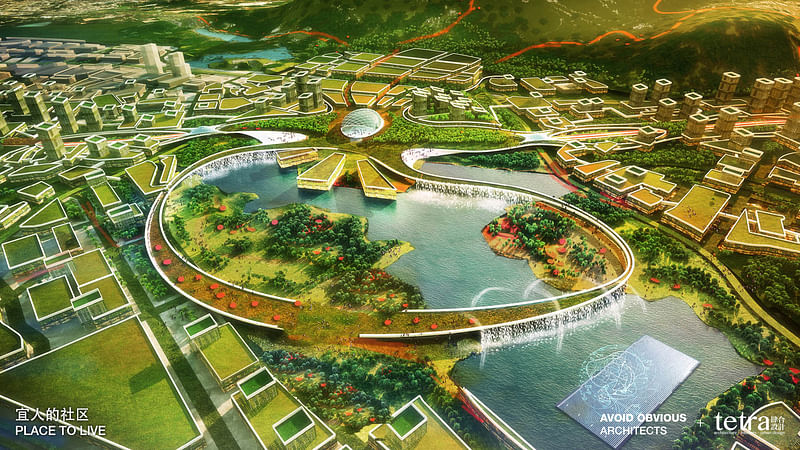
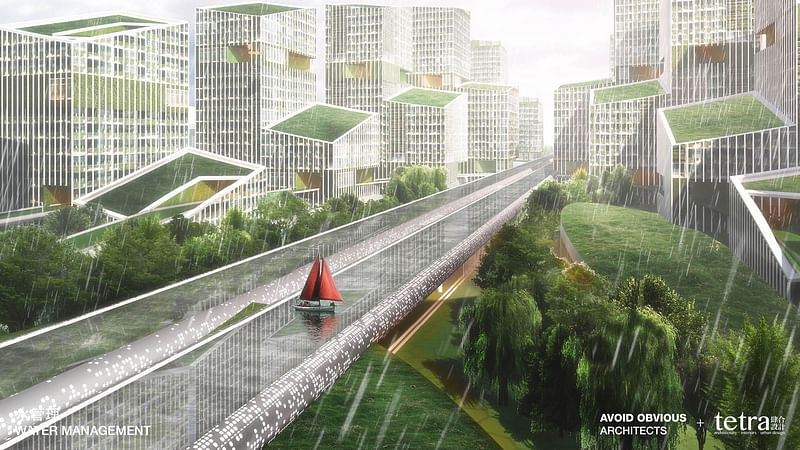

“Design Concept of New G107: We borrowed design principles from nature. We will elevate the 12-lane G107 into two 4-lane enclosures for better pollution control. The new G107 will weave vertically and horizontally throughout its 30km length. It will have sections at grade, above grade and below grade. All three sections will include spaces where the ground surface will be opened up for greenery and public amenities. Above grade Green platforms will weave through buildings on both sides of G107 to provide pedestrian access to new transit hubs.”
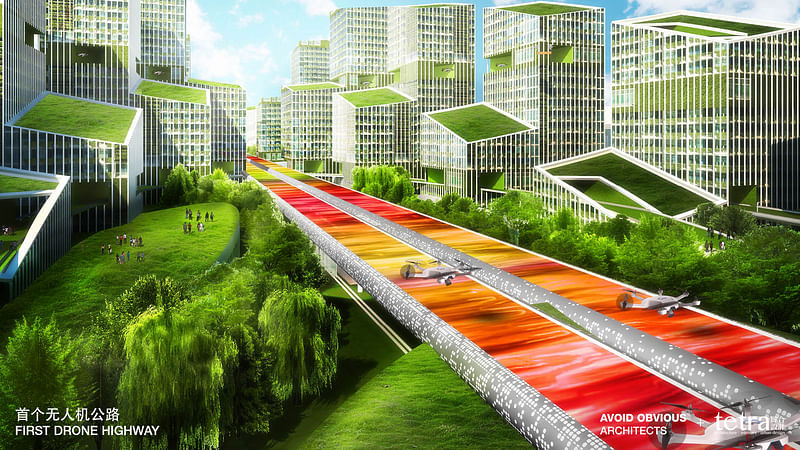
“Multimodal transit systems will be employed making travel time from one area to the next within a 15 minute timeframe. An added benefit will be to reduce the city’s dependence on cars. The new G107 will not only bridge the natural and public amenities together, it will also add space for new cultural centers that celebrate art and design. The new G107 will be an organic merging of transportation modals and urban planning in three dimensions.”
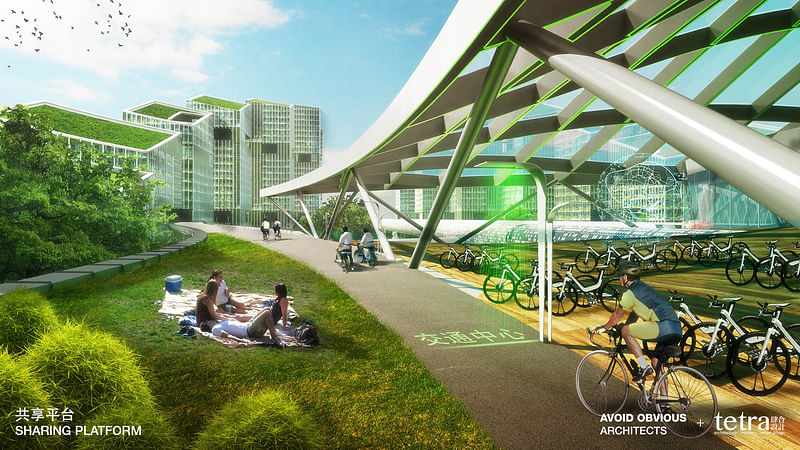

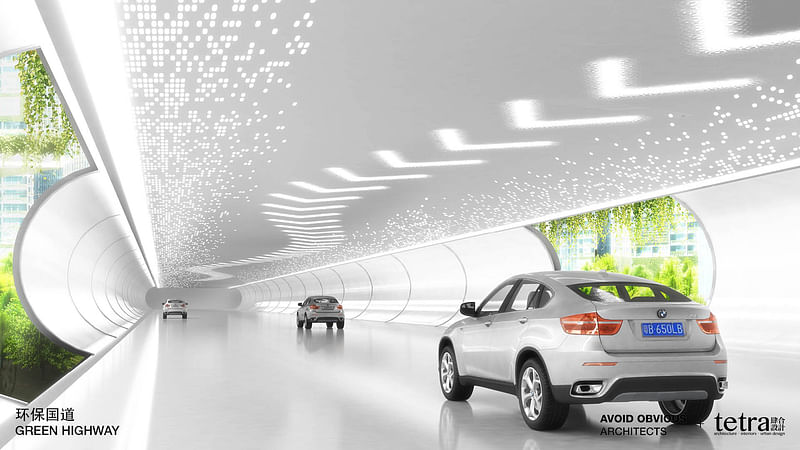

“Sustainable Design and Holistic Approach: Landscape treatment, water management and transportation are tied closely together with the new G107. With the development of a sharing economy, transit hubs with shared vehicles will be deployed along G107 above every intersection. The multi-layered design will not only create a smooth transit experience, but it will also carry smart technology to manage water and air pollution. The new G107 will no longer be a deterrent to development, but a valuable asset for Bao’an. Our smart design will drastically reduce the city’s carbon footprint. The ultimate goal is to make Bao’an a smart city that can be carbon neutral by 2045.”

“Business Trend and the Future: We conducted a survey from worldwide business owners [image in the gallery below] and concluded that talented people want to live in a city that is:
- Sustainable
- With good quality of life
- With job opportunities”
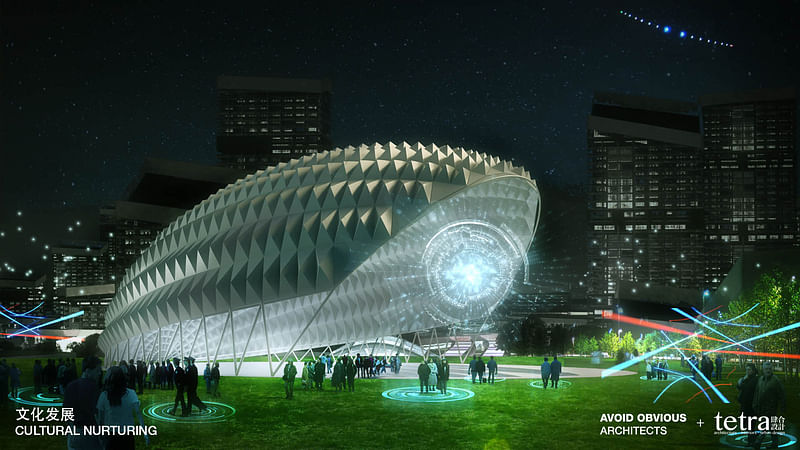
“Our design intent is not to give up Bao’an as a manufacturing town, but to upgrade its facilities into a ‘Green Manufacturing City’ with the power to share and connect people, places, and amenities. This sustainable city will celebrate the new ‘sharing economy’ with facilities like transparent factories, drone ports for deliveries, open platforms for experiments, mobile offices and natural amenities to share. The new G107 will be a place to LIVE, WORK and PLAY.”
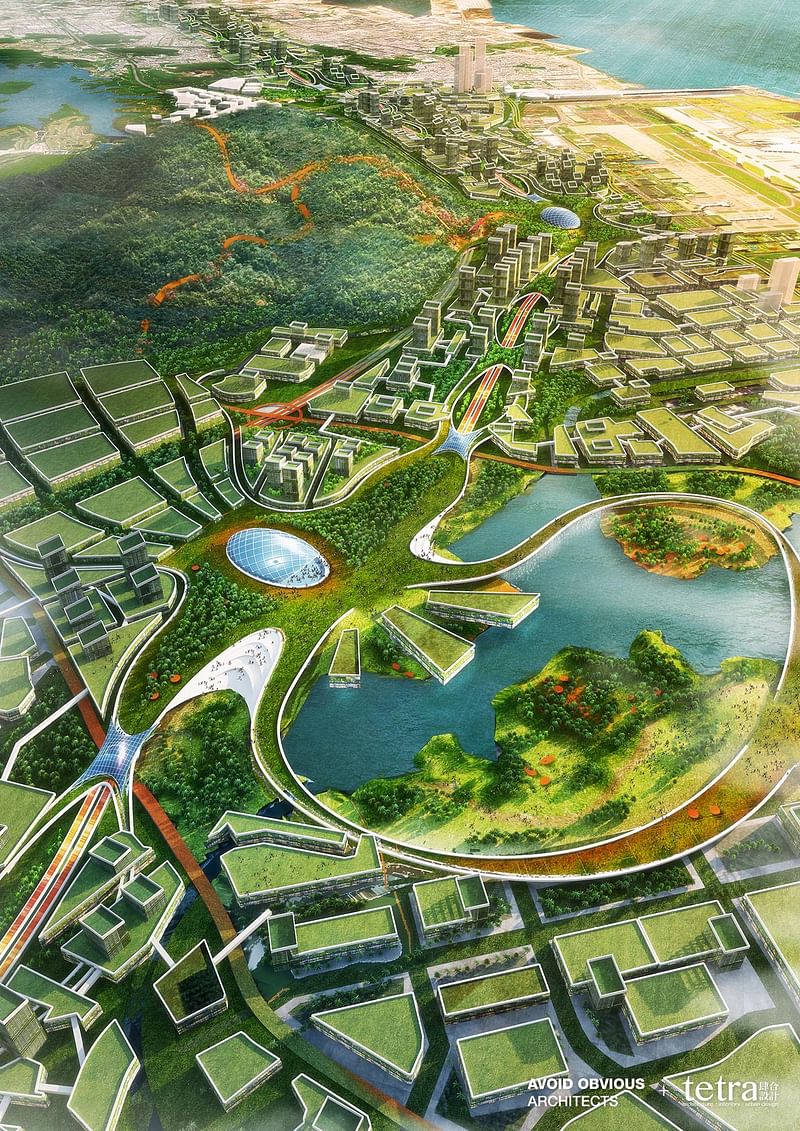
“The New Pearl River Delta: Shenzhen have won the greenest city award in China, but Bao’an is behind on its pollution management and green ratio. With our design, Bao’an can and will be the greenest of the greenest city in China. With the first drone highway and the first green manufacturing facilities, Bao’an will become a pilot city for the world to emulate and learn from. At the same time we will totally redevelop our old manufacturing town. The new G107 will enhance Shenzhen as the ‘City of Design’. It will also diversify and redefine the Pearl River Delta and help establish China as a leader of innovation on a global scale.”
Video and more images below. You can find the rest of the proposal here.
All images courtesy of Avoid Obvious Architects + Tetra Architects & Planning. Text via.
*Correction: A previous version of this article indicated this proposal as the competition winner. It is a finalist proposal.
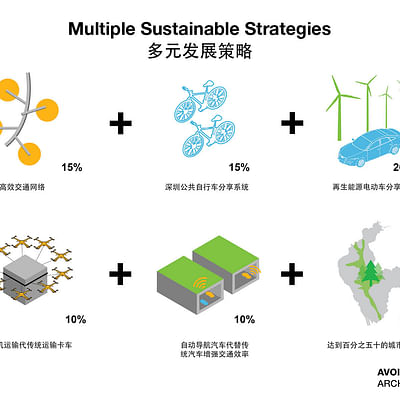
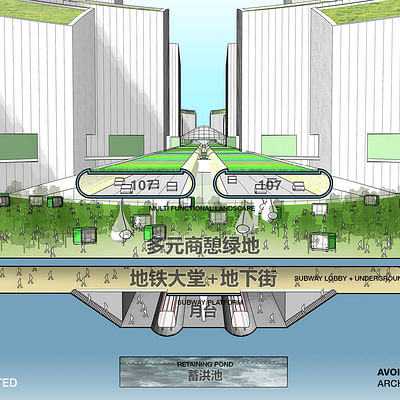
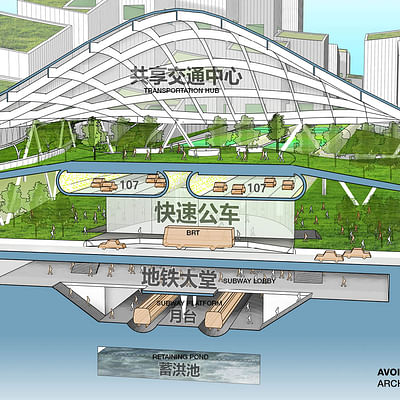

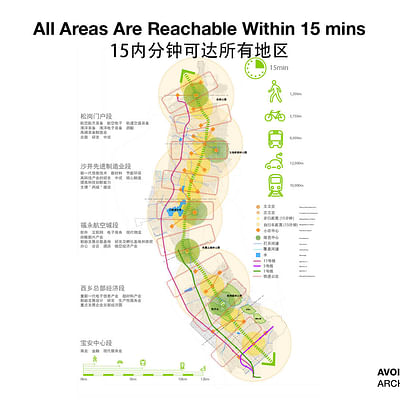



Share
1 Comment
Nam Henderson · Aug 11, 16 3:41 AM
Nice bird imagery in the "Connections to LiXin Reservoir", image? Suppose it is supposed to be evocative of a "phoenix" a la Phoenix Mountain... Iconographic/animistic landscape/urbanism, maybe? Noteworthy perhaps, given that Avoid Obvious Architects, is one of the team/firms.Comment as :